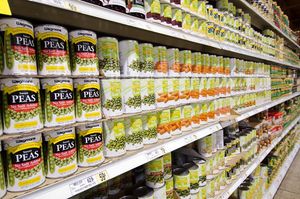41% of U.S. Consumers Switching to Store Brands to Combat Rising Food Costs
 Rising food costs have U.S. consumers pinching their wallets, particularly when it comes to meat and eggs. But have increased expenses impacted purchasing decisions? According to a Qualtrics survey of 1,000 consumers – yes, consumers have shifted purchase preferences due to the costs.
Rising food costs have U.S. consumers pinching their wallets, particularly when it comes to meat and eggs. But have increased expenses impacted purchasing decisions? According to a Qualtrics survey of 1,000 consumers – yes, consumers have shifted purchase preferences due to the costs.
Americans with lower incomes have been most impacted by food inflation and are at the highest risk of reduced access to nutritious food options. Farmdoc daily investigated 15 possible coping mechanisms consumers might use to decrease spending on groceries, such as switching to cheaper brands and beginning to use food banks or pantries. Americans with inadequate food security engaged in 4.8 coping mechanisms – the most of any group. U.S. consumers mainly buy cheaper or store-brand food items to cope, with 41.2% making the switch. 38.1% of consumers spend less on non-food items to cope with rising costs. 37.9% reduced the number of restaurant purchases, and 31.5% changed the types of foods they purchased.
Other consumers report going to multiple grocery stores to achieve the best sales or going to cheaper grocery stores entirely. Using coupons, more restrictive budgeting, and buying in bulk were also listed as coping mechanisms.
Read more on how U.S. consumers are managing more expensive food costs here.
Kalaitzandonakes, M., B. Ellison and J. Coppess. “How Us Consumers Say They’re Coping With Rising Food Prices: Results From the Gardner Food and Agricultural Policy Survey.” farmdoc daily (13):10, Department of Agricultural and Consumer Economics, University of Illinois at Urbana-Champaign, January 19, 2023.
